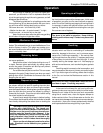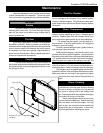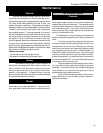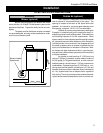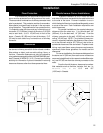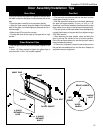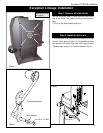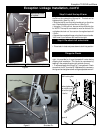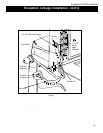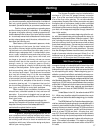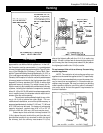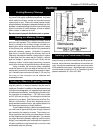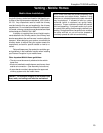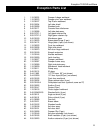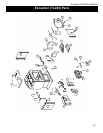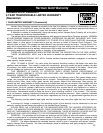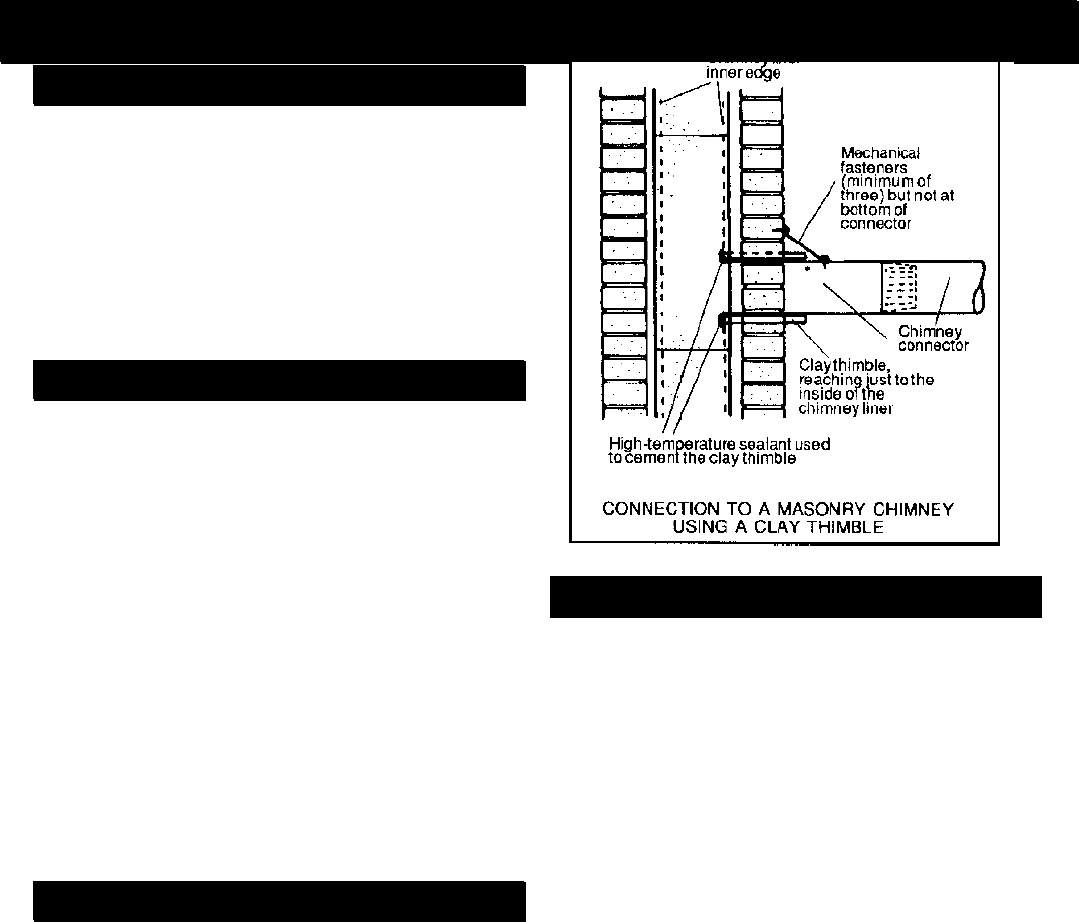
Exception TL200 Wood Stove
19
Existing Masonry Chimneys
If you plan on using a pre-existing masonry chim-
ney, have it thoroughly inspected and cleaned. Any faults
which make the chimney unsafe and unusable must be
repaired prior to use. These can include improper height,
structural defects, blockages, inadequate clearance to com-
bustibles, unsealed openings into other rooms of the house,
signs of creosote or smoke leakage, a loose or absent
clean-out door, or absence of a liner.
Do not connect to any air distribution duct or system.
Venting to a Masonry Chimney
When connecting to a masonry chimney, several
provisions are standard. First, whether the chimney con-
nector is vented to the chimney through a thimble or a
breech pipe, neither must pass beyond the inner surface
of the chimney liner, and both must be firmly cemented in
place with refractory cement. (A thimble is a masonry
pipe which is inserted through the chimney wall, and is
frequently the preferred method; a breech pipe is a piece
of steel pipe used the same way.)In Canada, a breech
pipe has redges or protrusions to lock it firmly into the
refractory cement. In either case, the chimney connector
vents to the chimney throught the thimble or breech pipe.
Using a thimble, the connector slides completely
inside the masonry to the inner adge of the flue liner, and
may be easily removed for chimney and connector inspec-
tion. A breech pipe must extend at least 2" (50 mm) into
the room, so the connector can be attached with
sheetmetal screws.
Venting to a Masonry Fireplace Chimney
In some situations, a code compliant chimney
originally used for a masonry fireplace may be used to
install your Exception. In addition to the requirements found
in the previous paragraphs, it is important to be aware that
all clearances must be met, including those from the chim-
ney connector to combustibles — 18" (360 mm) to sides
and 18" (450 mm) to ceiling. Do not forget to include floor
protection in your plans. (See Clearances and Floor Pro-
tection in this section.) Since many fireplaces have ex-
posed wooden mantels and trim, pay special attention to
the clearances necessary to these materials.
If your fireplace chimney is behind a combustible wall,
you must use an approved wall pass-through system to
gain access to the masonry chimney. The chimney con-
nector must enter the chimney at a place where it is lined,
and the fireplace must be made inoperable. For example,
you might remove the damper, replacing it with a secure,
airtight, noncombustible seal (removable for inspection);
this also satisfies the requirement that no room air must
be allowed to enter the chimney.
Installing to a Prefabricated Chimney
When venting your Exception using a prefabri-
cated chimney, be sure to contact local building code au-
thorities, and to follow the manufacturer’s instructions ex-
actly. Use only the manufacturer’s parts; do not use make-
shift installation techniques. All prefabricated chimneys
must be tested to either the U.S. or Canadian high-tem-
perature standards, UL 103 or ULC-629.
Venting



